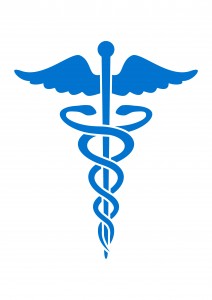 For years, the primary aim of health care reform has been to make insurance affordable for everyone. The assumption was that a lack of access to medical care is behind our country’s dismal standing in overall health. But another possibility is forming like a ghostly spectre above the huddled masses yearning to be well: There’s something rotten at the very core of the American health care paradigm.
For years, the primary aim of health care reform has been to make insurance affordable for everyone. The assumption was that a lack of access to medical care is behind our country’s dismal standing in overall health. But another possibility is forming like a ghostly spectre above the huddled masses yearning to be well: There’s something rotten at the very core of the American health care paradigm.
Today, fully one-third of the money spent on health in the US goes toward administrative costs. I’d like to believe that the other two-thirds went toward medical treatments that save lives and keep us healthy. But a new report emerged this week showing that medical errors are now the third leading cause of death in this country, trailing only behind heart disease and accidents. The percentage of insured Americans who seek these booby-trapped procedures is rising by the day. So, exactly what is our insurance paying for?
If you look at what a typical policy covers, for the most part, it is treatments for disease. As long as there is “scientific proof” of any kind that these treatments produce even an initial effect, our insurance will cover them.
Conversely, if you search your insurance contract for preventative care, you will be at a loss to find it. Nutritional counseling alone could save many lives, but a medical doctor’s understanding of this field is, for the most part, non-existent. A naturopathic physician could provide much better services. But are naturopaths covered by our medical insurance? No. In fact, there is an active movement in the medical community to prevent this from happening.
The arguments against funding preventative care are spin doctoring at its finest and they play on sympathy and private guilt: “It’s unethical to withhold potentially life-extending interventions on the basis of cost.” But the funding for healthcare is not unlimited, and it is not possible to pay for every level of intervention. The first item on the agenda to be tossed to the wayside is always preventive care.
Here’s how it works: When a funding choice has to be made, the administrative powers that be (which, you will recall, pocket one-third of all medical expenditures) are supposed to base decisions on a principle called quality-adjusted life-year (QALY), which calculates whether a course of treatment warrants the cost. In reality, QALY figures are routinely ignored when it comes to choosing between treatments for disease and preventative programs that focus on health. Let’s take a look at these two cases in point:
Scenario #1: A 63-year-old woman is diagnosed with late stage lung cancer. There is no chance that she will recover, but, with debilitating and painful treatments costing over $100,000, she might extend her life for a few months. When the patient puts in a request, her doctors and insurance company approve the procedures. The fees are ignored, as a matter of principle: “Preserve human life, at all costs.”
Scenario #2: A health department proposes to offer free nicotine-replacement therapy to every smoker within their county. This is an action that could prevent many cases of lung cancer by helping smokers quit. The organization faces resistance and can get no funding whatsoever.
Medical treatments are routinely paid for even if they are expensive and pointless. The treatment of metastatic lung cancer may cost $800,000 per QALY , but is typically provided. So, why are primary preventive services typically withheld, even if they are highly cost-effective? The Diabetes Prevention Program costs only $14,000 per QALY , but is covered by only a scant few insurance plans. Free nicotine-replacement therapy, which has recently been proposed in England, costs less than $5,000 per QALY but the US refuses to even consider taking such a measure.
This difference in standards may hide behind the mask of empathy, but it is really the financial structure of our healthcare system that is running the show. We reimburse hospitals and doctors for their cost of care, government funding covers uncompensated care, and allowances are made to pass those costs on to insured patients. Preventative care services, however, come from annually appropriated funding to public agencies, and those services have to compete with the budget allotted for schools, police and virtually every other public need. Few people are going to choose general preventative health measures over their children’s educational future or crime control.
Until prevention is taken as seriously as the federally approved treatments for disease (which are taking a death toll all their own behind the scenes) we will never really improve the health of our nation. I urge you to write to your legislative representatives in support of funding for preventative health.
More Posts by The Author:
Susan Clausen’s Endangered Species
To Be a Friend
What is Love?: Love through the ages
Habits
Advice From The Trenches: Help
